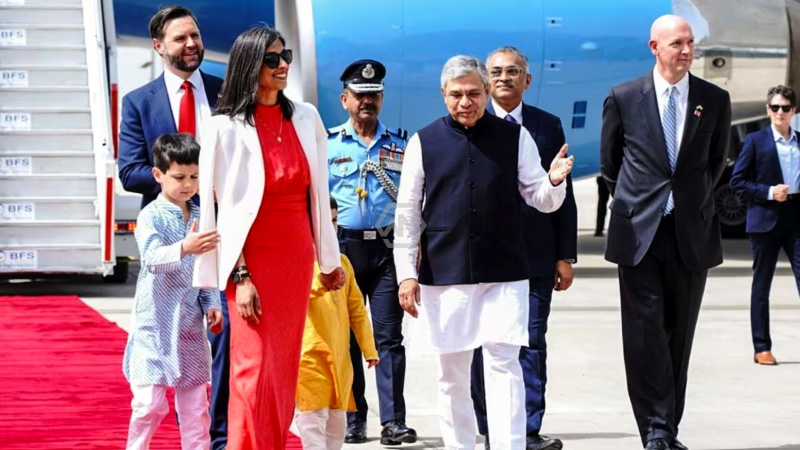- JD Vance arrives in India with wife Usha and their children, starting with a visit to Akshardham Temple.
- The family dons traditional Indian attire, drawing warm attention.
- Key diplomatic agenda includes trade talks and launching the TRUST tech partnership.
U.S. Vice President JD Vance began his four-day India visit on April 21, 2025, with a culturally rich start at the Akshardham Temple in Delhi. He was accompanied by his Indian-origin wife, Usha Vance, and their three children—dressed in traditional kurta pyjamas and Anarkali. The family was warmly received, signaling a gesture of mutual respect and connection.
Beyond the cultural optics, Vance’s trip carries substantial diplomatic weight. He is expected to hold strategic discussions with Prime Minister Narendra Modi, with a focus on trade relations, WTO concerns, and the formal unveiling of the TRUST (Transforming Relationship Utilising Strategic Technology) partnership.
From Temples to Trade: JD Vance’s India Visit Blends Symbolism with Strategy
The red carpet rolled out in Delhi signaled not just a formal welcome but a nod to the growing importance of India-U.S. ties. Folk dancers, honor guards, and a ceremonious atmosphere greeted JD Vance and his family as they stepped into India’s capital for their first official visit since Vance assumed office. His choice to begin the tour at Akshardham, one of Delhi’s most iconic Hindu temples, underscores a soft-power approach to diplomacy.
Usha Vance’s Indian heritage and the family’s traditional Indian attire further humanized the visit, appealing to public sentiment. It also subtly emphasized shared cultural ties. Their children—Ewan, Vivek, and Maribel—won hearts with their ethnic fashion. This created a viral moment on social media and signaled openness to cultural exchange.
However, the visit is not without tension. Protests by groups such as the All India Kisan Sabha highlight grassroots opposition to U.S. trade policies and deportation concerns. Additionally, Indian opposition leaders have pressed the Modi government to take a firm stance on preserving multilateral trade frameworks and protecting Indian interests abroad.
The diplomatic highlight will be Vance’s meeting with PM Modi, during which both sides aim to advance the TRUST initiative. With the U.S. pushing for tech-driven strategic ties and India keen on removing trade bottlenecks, the outcome could shape future cooperation. This will span across AI, cybersecurity, semiconductors, and defense innovation. The involvement of U.S. National Security Council’s Ricky Gill adds heft to the discussions.
JD Vance’s India visit artfully bridges personal cultural ties with a forward-looking diplomatic agenda. It sets the tone for a potentially transformative chapter in U.S.-India relations.
“Personal ties and cultural respect are powerful tools in diplomacy, often laying the groundwork for strategic partnerships.”



